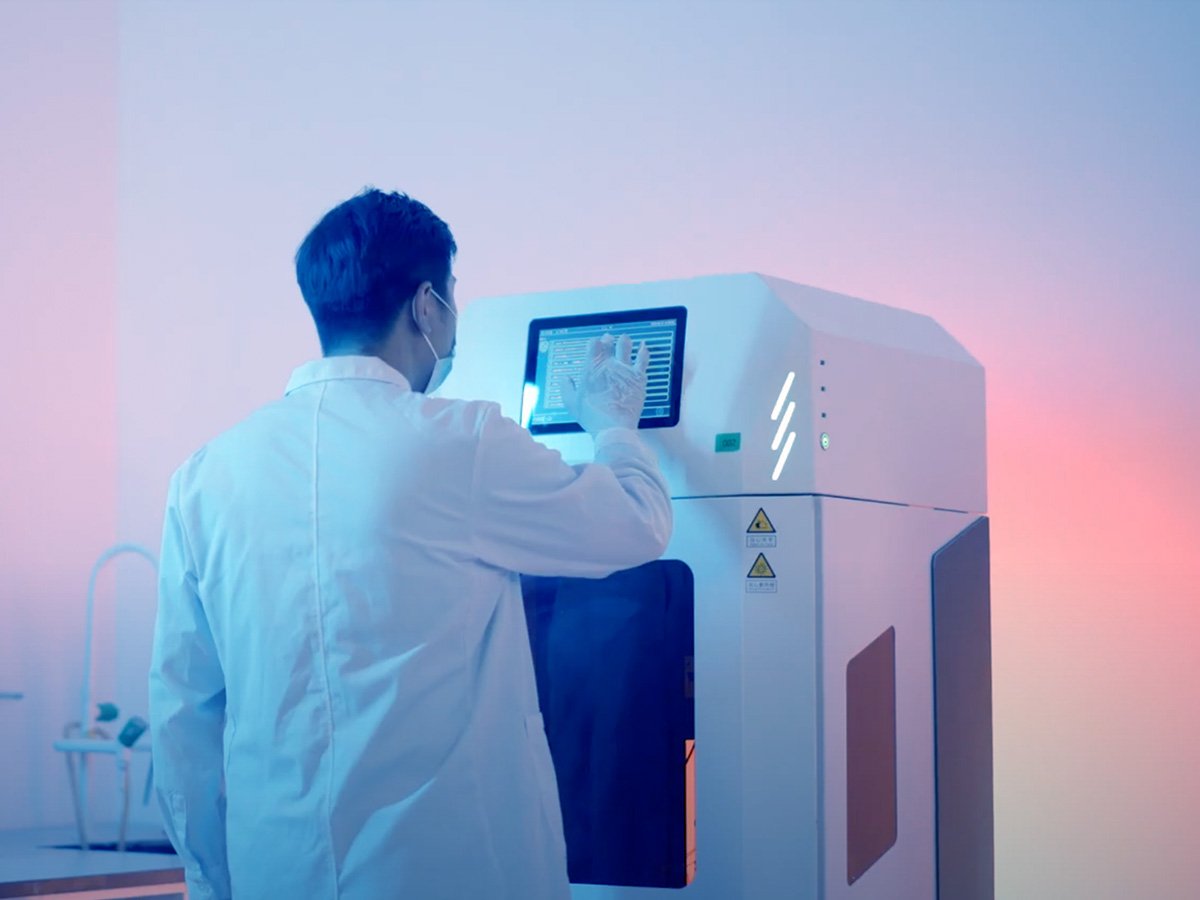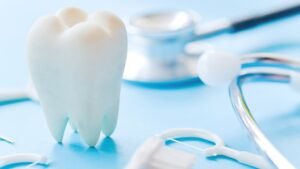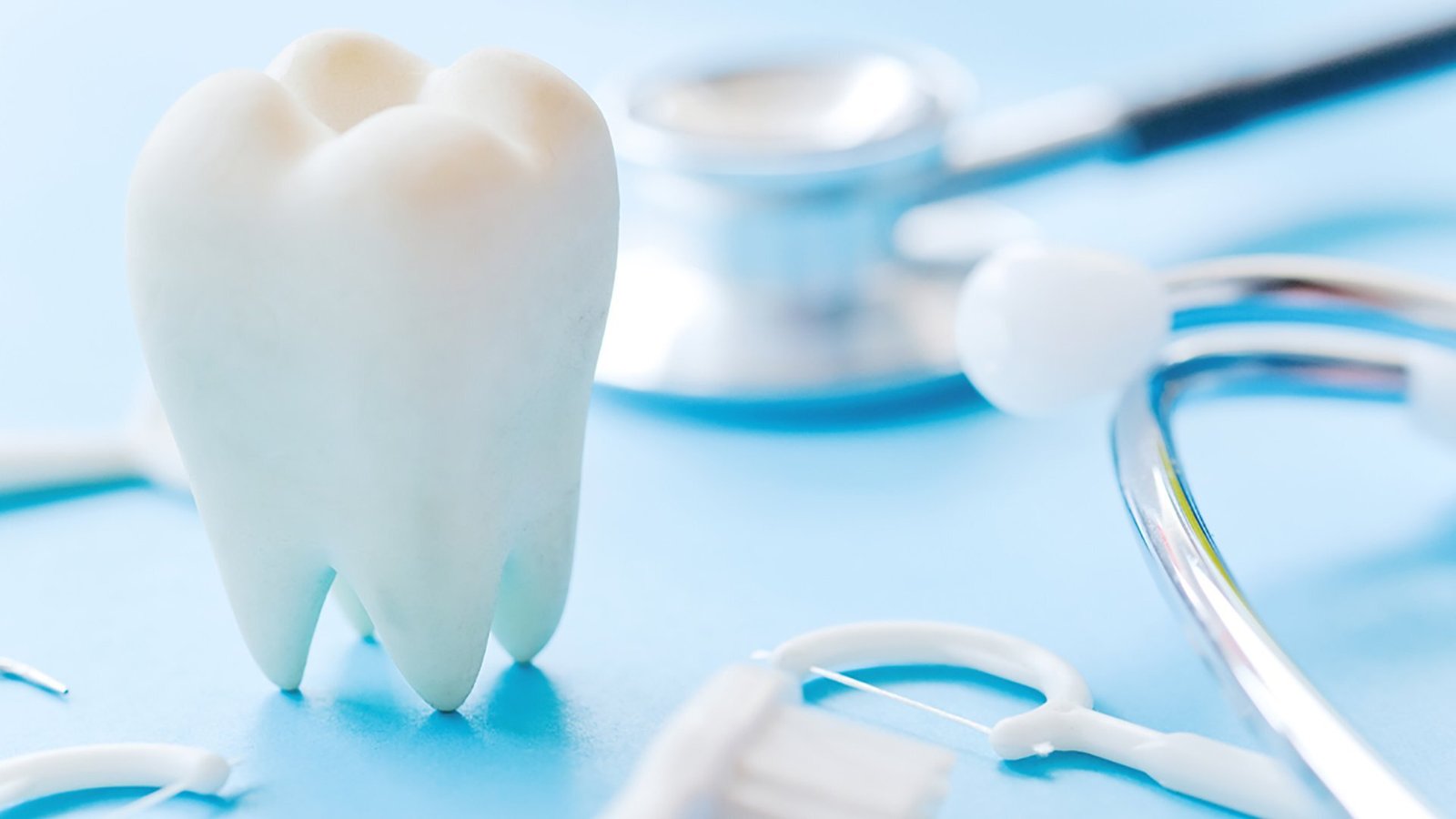Using traditional dental models can mess up your crowns, veneers, and bridge creations. The old dental models need physical molds, which can break or get lost. Sometimes, the final restoration doesn’t fit well, so dentists have to readjust it.
This consumes a lot of wasted time and money for both the patient and the dentist. However, the digital dental models are designed to tackle all these problems easily. These are made from advanced tools or 3D scans. There are no more messy materials, and the process is clean and fast.
In this article, you will explore an overview of digital dental models, benefits, and technologies that support these models. So, keep reading to explore it.
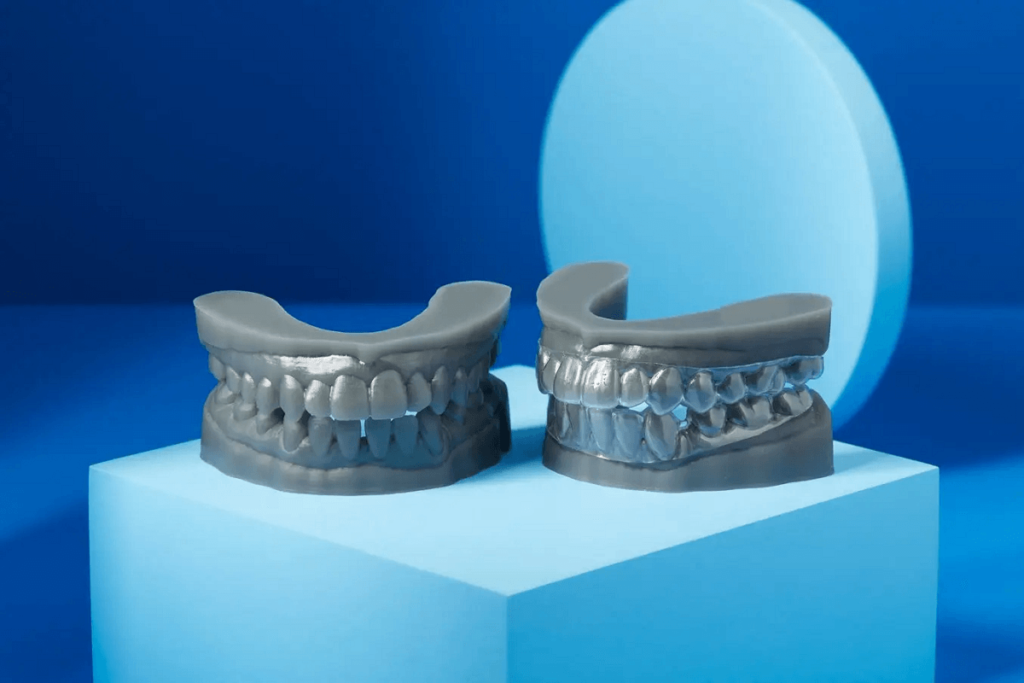
What Technologies or Tools are included in Digital Dental Models?
Digital dental models use advanced tools to make work faster. These tools help dentists and labs create, design, and build dental models with great care. Let’s look at the main technologies behind digital dental models and how they help in daily practice.
1) Overview of Hardware: 3D Scanners, Cameras, Milling Units
The digital dental models use a 3D scanner and ergonomically designed light loupe to scan the patient’s mouth. The 3D scanners show teeth and gums in full detail. It’s fast, clean, and doesn’t need messy materials.
The dentist takes 3D images of the gums, jawbones, and damaged teeth by using this scanner. Once scanned, the image is sent to the lab or saved for later use. Here, they use a milling unit to make shaped crowns and bridges from blocks of material, based on the scan.
2) CAD/CAM Systems for Design and Manufacturing
CAD (computer-aided design) software is also an important part of digital dental models. Lab technicians use this system to design crowns, dentures, and more. Once the design is ready, CAM (computer-aided manufacturing) systems help make it real. These tools work together for smooth, fast workflows. It offers high strength and beauty for final restorations. It reduces the material and energy waste through optimized processes.
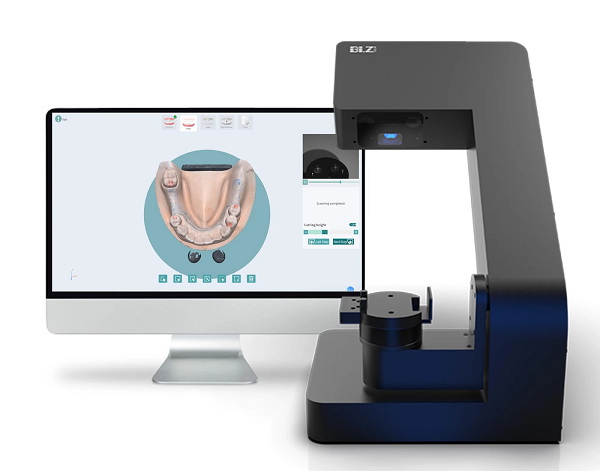
3) 3D Printing for Physical Model Creation
A 3D printer is also an important part of digital dental models. It’s great for making dental models, guides, and mockups. The printer layers resin or other materials to build the shape. It’s fast and very accurate. It saves time and helps with better planning and testing before final work begins.
Aidite also provides a 3D printer that is reliable and affordable. It delivers exceptional accuracy and efficiency. Their printer is particularly used in the production of dental guides, veneers, single crowns, and connecting bridges.
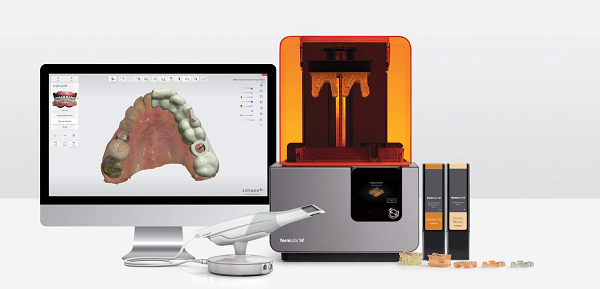
4) Digital Imaging
Digital imaging is also part of digital dental models. It gives clear, high-resolution visuals of the mouth. Tools like panoramic X-rays and CBCT scans are used to capture bone levels, nerve locations, and tooth roots. These images are linked to 3D scans to build a complete picture. It helps dentists make safe and precise treatment plans based on the model.
5) Digital Smile Design (DSD)
This software lets dentists design smiles digitally before any real work begins. They upload the patient’s scan and photos, then test different tooth shapes and sizes on screen. DSD helps in matching the new teeth with the face. It adds value to digital dental models. The digital smile design enables patients to preview their results and approve the design early.
6) AI Integration
AI tools review digital dental models and point out potential issues, like weak spots, bite errors, or spacing problems. These systems learn from past cases and help improve design suggestions. In labs, AI speeds up workflows and helps create better-fitting restorations. For dentists, it brings more safety and saves planning time.
7) Digital Patient Records
Digital models link to full patient files. Everything from scans, photos, treatment plans, to notes stays organized in one place. Dentists and lab techs can open any past case to review details, adjust designs, or repeat a process. This makes follow-ups easier and reduces the chance of missing something important.
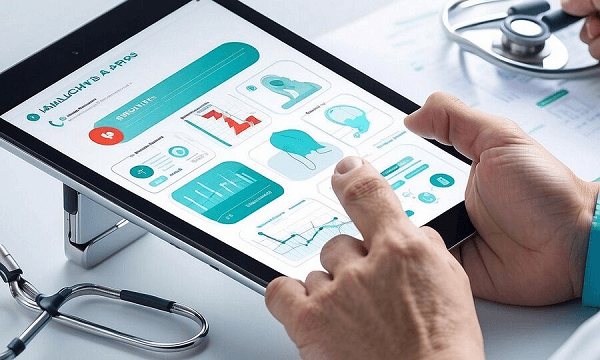
8) Augmented Reality (AR)
AR tools enable dentists to overlay digital models onto the real mouth during treatment. Using a camera or AR glasses, they can see where to cut, place, or adjust in real time. It’s useful in implant surgery and orthodontics. It makes the placement more precise and supports better planning from the digital model to the actual procedure.
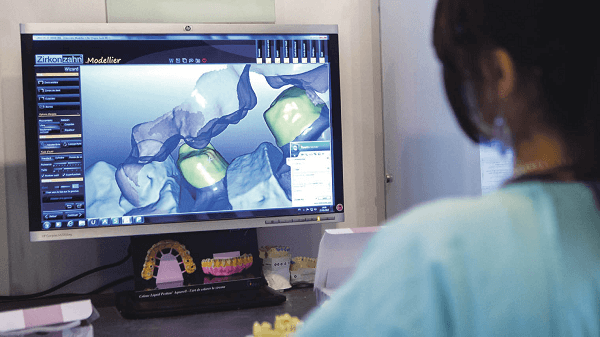
Benefits of Digital Dental Models
The 3D dental models provide a lot of benefits for both dental clinics and lab technicians. These virtual dental models help make treatments better and faster. They also make work easier to manage. Here are the main benefits of digital dental models.
– Accuracy and Predictability in Diagnostics
With 3D dental models and tools, you can see every small part of the tooth and gum. This helps dentists see the real problem fast. It also helps avoid guesswork. The scans are sharp and clear, which means fewer mistakes. This level of accuracy makes planning treatments much easier.
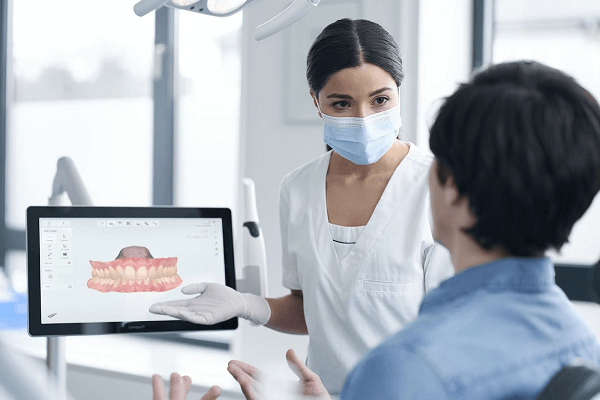
– Enhanced Patient Experience and Communication
3D dental models help dentists show patients what is going on. Patients can see their teeth on a screen. This makes it easier to explain the problem and treatment. Patients feel more included and confident in the process. They ask fewer questions and trust the dentist more.
– Faster Turnaround and Streamlined Workflow
Virtual dental models save time for both the patient and the dentist. You don’t need to spend many hours in clinics to record an impression. A dentist takes a digital scan of your mouth. Once scanned, the files go straight to the lab. This cuts down waiting time for the patient and speeds up the whole process.
– Remote Access and Collaboration
With digital dental tools, you can share the files online. Dentists and lab techs don’t need to be in the same place. This is great for clinics that work with outside labs. Files can be checked anytime, anywhere. This kind of teamwork helps deliver better results faster.
– Reduced Material Waste and Storage Needs
Using old molds to make restorations requires a lot of stuff like plaster, trays, and boxes. These take up space and can go bad over time. Digital models don’t need shelves or bins. They are saved on a computer or in the cloud. This saves storage space in the clinic or lab. It also helps the planet by cutting down waste.
Where are Digital Dental Models Used in Clinical Dentistry?
In modern dentistry, the healthcare expert uses digital dental models to improve the results. Dentists and lab technicians use them to plan, design, and finish dental treatments. Below are some of the top areas that provide an explanation of how digital dental models work.
– In Orthodontics: Aligners, Retainers, and Monitoring
In orthodontics, digital dental tools help plan aligners and retainers. With just a scan, dentists can map the full mouth in 3D. They don’t need to take messy impressions. Software then helps track tooth movement. The digital dental models for orthodontics are helpful for checking if the treatment is working. Dentists can show patients how their teeth will move over time.
– In Restorative Dentistry: Crowns, Bridges, and Dentures
Digital dental models are key in making crowns, bridges, and dentures. The scan gives an exact image of the patient’s teeth. This helps design better-fitting restorations. Labs use the scan to make crowns and bridges that match shape and size perfectly.
– In Implantology: Virtual Planning and Guide Creation
For dental implants, digital models are a big help. Dentists can use them to plan where the implant should go. With special software, they look at the jawbone in a 3D scan. The scan also helps create a surgical guide. This guide shows exactly where to place the implant during surgery.
– In Aesthetic Treatments: Smile Design and Mockups
Digital dental models help design to enhance the patient’s smile. Dentists use them to make mockups and test new looks. The scan shows the shape and size of the teeth and gums. Dentists can also show patients a preview of their smile. It’s also easy to adjust the design before starting the real work.
How to Select the Best Brand of Digital Dental Models Tool for your Practice?
For making precise digital dental models, it’s important to select the right brand to buy dental tools. Always choose the brand that has reliability and reputation in the dental industry. Think about your affordability and brand customer support.
A brand should provide excellent support at every step of buying the tools and equipment. Good brand tools will save you time in scanning, designing, and printing. Aidite gives you high-quality dental tools and materials. It helps both dentists and labs work better every day.
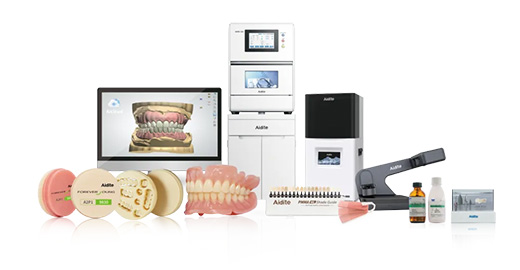
FAQs
What is digital dental design?
Digital dental design means using a computer to plan and shape dental work. Dentists or lab techs use special software to design crowns, bridges, or dentures. It all starts with a 3D scan of the mouth. Digital design helps make smiles that look good and feel right.
What are dental models used for?
Dental models are used to see the shape of a patient’s teeth and mouth. Dentists use them to plan treatments like braces, crowns, or dentures. They help check bite, tooth gaps, and fit. Labs use models to make things that match the mouth.
Do most dentists use digital impressions?
Many dentists now use digital impressions, but not all. Digital tools are becoming more common because they are clean, fast, and easy. They help dentists see teeth better and send files quickly to labs. Still, some clinics use old methods with molds.
Final Thoughts
To sum up, digital dental models are changing how dental clinics and labs work. The dental clinics use advanced tools to make dental models like crowns, implants, aligners, and dentures. It eliminates the risk of poor fitting and infection.
These models are easy to fit and promote the healing time. So, you don’t need more messy mods or broken impressions. Dental labs can do it right away for you. This makes both the dentist and the patient happy. It also keeps the clinic clean and saves space.

